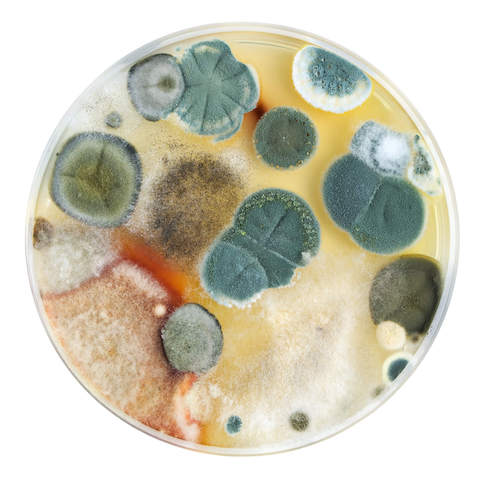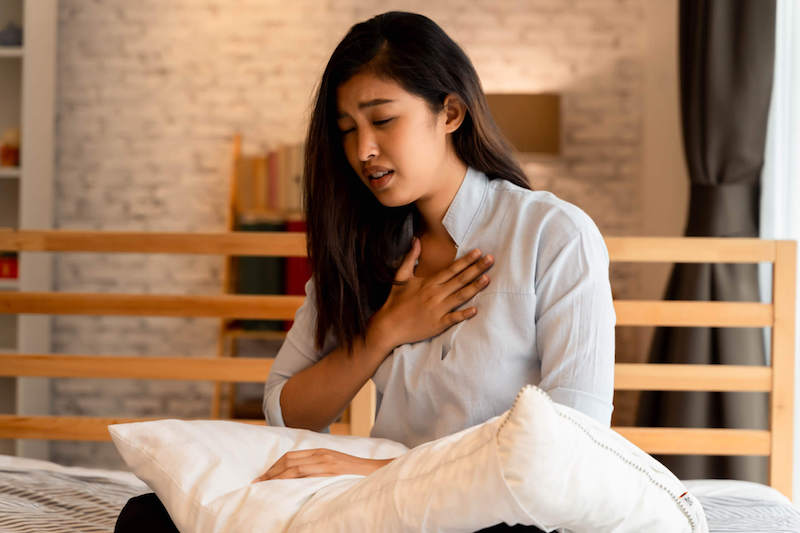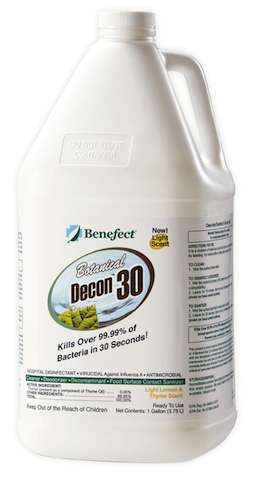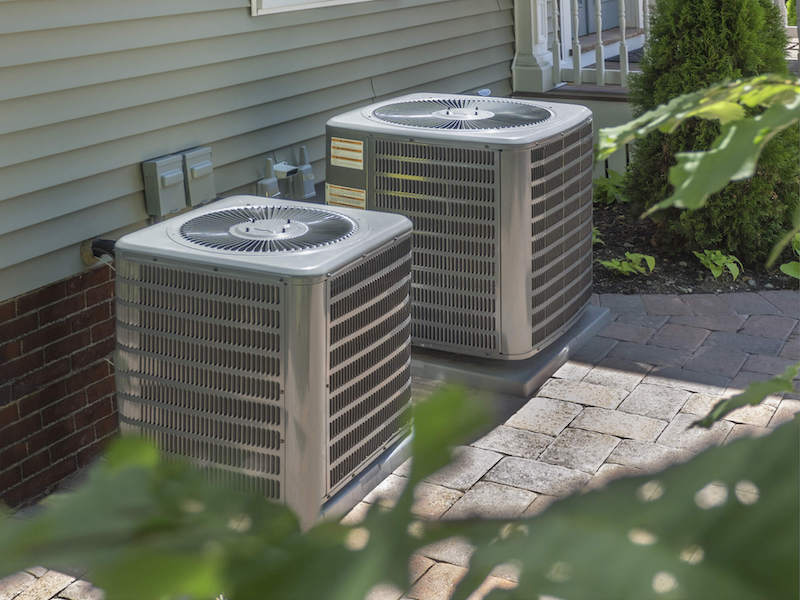Mold prevention isn’t typically on many people’s radars. Sure, most individuals know that indoor mold growth isn’t great, but that’s pretty much where the train (of thought) stops. That shouldn’t be the case, though. The best way to handle this indoor contaminant is to actively work towards stopping it from growing in the first place, which is why it’s important to take steps to avoid mold and toxins.

If you’re new to the mold world, figuring out where to start with prevention can be the worst part, especially with the mass of misinformation out there. It’s a little-discussed, little-considered threat to our home environment that can easily sneak right in and begin causing a ruckus. Chances are, the idea of mold prevention in general probably never crossed your mind that's okay! You’re definitely not alone.
That just means that 2022 will be the best year yet for mold prevention! But first, what even is mold?
The Fungus Among Us
Before delving into the top three steps to avoid mold and toxins, it’s best to know what exactly you’re working to prevent.
Most of us have probably heard of the infamous "black mold," but that’s not the only member of mold’s family tree. There are over 100,000 species of mold identified so far.¹’² Some are naturally toxic, some are allergenic, and some are pathogenic. A common misconception is that black mold, or Stachybotrys chartarum, is the only species we have to look out for when it comes to our health. That's absolutely not true. For example, Aspergillus, a "common mold" found within homes, can trigger a condition called Aspergillosis in those exposed. ³
When it comes to mold, the best mentality is that any and all indoor growth should be avoided and immediately removed because you never know how someone is going to respond to exposure. But before we get into that, though, here are a few more quick facts so that the steps to avoid mold and toxins listed below will make more sense.
Moldy Facts and Why It’s Important To Take Steps to Avoid Mold and Toxins
Every species of mold reproduces by creating microscopic spores that are released into the air. When these spores stumble upon a habitable location, they’ll settle in and begin to grow. Not a problem when this occurs outdoors, but a huge issue when this takes place inside of our homes. Which, unfortunately, can easily happen.

All a spore needs are four simple components to transition into the land of the living: ⁴
- Oxygen (this barely counts because they require so little)
- Temperature (40-90 degrees Fahrenheit is ideal, but some species can survive in extremes)
- Food (they eat almost anything)
- Moisture (this is the kicker)
A spore can fly right in through the front door, land on a damp piece of carpet, and boom, there’s now a living mold colony inside of your home. If that carpet is damp for at least 24 hours, that is. It can happen within the blink of an eye.
Once mold takes root within a home, the chances of another mold problem developing elsewhere skyrocket. Then, you’re not just dealing with one mold factory, you’re dealing with several. That creates a long list of problems such as the cost of removal and exposure-related symptoms.
The key to avoiding this phenomenon is actively working towards eliminating habitable areas, continuously removing mold spores hanging around, and immediately (and properly) getting rid of any mold growth that managed to slip in.
Why Is Indoor Mold Growth Bad?
The short answer: for your health.
Mold particles are so small that they can be inhaled and ingested. Not that you’d know they were making their way into your body because they’re invisible to the naked eye. A few spores and toxins encountered throughout the day typically won’t cause a problem. With over 100,000 species, it’s impossible to avoid.
To address misinformation number two, though, experiencing indoor mold growth isn’t the same as experiencing mold growth outdoors. All of those mold particles outside are fairly spread out; they’re low in volume. It’s a big world out there! When mold grows indoors, all of those spores are trapped within the walls of the home. Some species can even produce microscopic toxins called mycotoxins that they release when they feel threatened. ⁵ This is an important thing to remember for later!

Instead of just a couple of particles throughout the day, the bodies of those exposed are now handling a massive amount of foreign particles at one time anytime they’re within the home. The immune system will work tirelessly to get rid of them, but it’s not unbeatable. Eventually, it can get run down, malfunction, or not be able to keep up.
Researchers are still attempting to determine exactly how mold exposure affects the human body, but it’s a tricky subject to dissect. Aspects like the length of exposure time, species of mold, presence of mycotoxins, genetics, pre-existing conditions, and immune system status all play a role. At the end of the day, no two experiences will be the same. ⁶’⁷’⁸’⁹ One individual might develop the occasional runny nose, and the other might be plagued with over 30 symptoms.
Some symptoms of mold illness include:
- Sore throat
- Brain fog
- Digestive issues
- Cough
- Watery eyes
- Weight gain
- Respiratory problems
- Hair loss
- Neurological issues
- Rashes
The kicker is that these symptoms won’t be alleviated until the root cause (aka, mold exposure) is removed. Hence, why it’s best to properly and quickly handle any growth and actively take steps to avoid mold and toxins. No one wants to live in a home that’s making them or their family sick.
The Top 3 Steps To Avoid Mold And Toxins
At this point, you’re pretty much up-to-date on why indoor mold growth is a serious no-no. That’s why prevention is crucial! Not only can it help avoid mold illness, but it can also save money down the road. Proper mold remediation often comes with a hefty, but necessary, price tag.
The key to mold prevention is to add one step at a time to your routines. Don’t try to jump in and tackle 50 different steps at a time; being overwhelmed is a real issue when it comes to a subject society doesn’t often chat about. Instead, set goals for yourself, or in this case, New Year’s resolutions!
Adding the three steps below to your mold prevention plan can help ensure your home remains safe for you and your family.

Steps To Avoid Mold And Toxins #1: Bring on The Botanicals
For a couple of reasons, botanical products like Benefect and EC3 laundry additives are phenomenal mold removal and cleaning tools. The lack of harsh chemicals makes them safer not only for the user but also for the environment.
Instead of harmful components, they use ingredients like essential oils to effectively clean and kick contaminants to the curb. These non-toxic ingredients also don’t muck up the air quality with harmful particles and reduce the risk of exposure-related reactions. For those who are already sensitive to environmental factors like mold, chances are that those strong chemicals will cause a reaction as well, so avoiding them is always a good idea.
Speaking of harsh chemicals, it’s time to address misconception number three: bleach does NOT work for mold removal. ¹⁰ Even the EPA says so. For non-porous surfaces, it will kill mold but leave mold particles behind. Leftover particles mean exposure will continue and any symptoms will persist. For mold on porous materials like the wall, this harsh cleaner will only kill the surface-level mold, not the mold existing deep within the structure. Overall, it’s a product you’ll want to steer clear of in the battle against indoor mold growth.
The cleaner you choose should help with eliminating mold spores, killing mold, and removing it from the roots. All of the contamination should be removed so exposure stops. That’s why EPA-registered products like Benefect are a great option.
The second checkmark for natural cleaners is again attributed to the lack of chemicals. Harsh ingredients can make mold feel threatened, and as mentioned before, some species of mold can produce mycotoxins. These little toxins are terrible for our health (which is why they’re regulated in food by the FDA) and are difficult to remove from surfaces. ¹¹ Actively working to avoid them is always worth the work and in this case the switch to botanical cleaners.
Keep in mind that not all mold growth is immediately visible, so consider adding botanical products to your cleaning regimen in general.
Steps To Avoid Mold And Toxins #2: Set An HVAC Service Reminder
The HVAC pretty much acts as the lungs of a home. On the downside, that means it can be a serious problem for spreading mold throughout the building. When the system flips from cool air to warm air, condensation can build up within the ducts or the unit itself, which offers the perfect home for mold.
If a lucky spore lands in this moisture, it will begin to colonize the space, leaving you with hidden mold growth within the home. This growth will just continue to thrive undisturbed until those warmer or cooler months occur. When you flip the thermostat to the alternate setting (heat or cold), all of those moldy particles will be blown throughout your home. Talk about a moldy particle bomb…
The drastic change in temperature can also lead to mold growth on other parts of the unit, such as the condensation coil and drip pan.

Routinely scheduling a professional to come in and service the HVAC in the spring and fall, before the warmer or cooler weather settles in, can help avoid this moldy catastrophe. This individual should test for mold while assessing the unit so that if there’s a problem, it can be resolved before turning on the unit and blowing it throughout the home. They should also clean the coil, make sure the blower, furnace, and cabinets are clean, and ensure that everything is operating correctly. Think of it as a bi-annual tune-up and cleanup.
A clean and healthy HVAC system helps maintain a clean and healthy home.
It’s a good idea to take additional HVAC maintenance steps as well, such as changing air filters per the manufacturer’s suggestions. Clogged and dirty filters allow mold to pass through to the rest of the unit and can even lead to mold growing on the filter itself. Other helpful actions include inspecting drip pans and maintaining indoor humidity levels between 30 and 50%. ¹²
Steps To Avoid Mold And Toxins #3: Channel Inspector Gadget
The easiest way to prevent a moldy catastrophe is to regularly check out moldy hotspots within your home. These include moisture-rich areas and places that you don’t often frequent which could have developed a hidden leak. The earlier you catch the problem, the faster you can properly handle it before it spirals into a multiple-mold colony situation.
Add these locations to your mold watch list:
- The toilet tank (lift the lid and peek inside)
- Underneath all the sinks
- Caulking and grout
- The attic
- The basement
- Crawlspaces

If you happen to find mold in one of these places, make sure that you remediate it properly so that all of the contamination is removed. This process includes deciding if it’s a small enough problem for you to handle on your own or if a professional is needed, developing a cleaning protocol that can handle any toxins or bacteria that might be present, and cleaning any contents near the mold problem. If a professional is needed, make sure to choose the right fit for the job and take the steps necessary to handle the issue correctly. Contacting an expert for advice is always an option if you have questions!
For any remediation, but particularly smaller issues like the toilet tank that you can tackle on your own, keep an eye out for mold growth that returns quickly. The mold could be a result of remediation that wasn’t quite thorough enough, or it could be a sign of a bigger mold problem elsewhere. You can attempt to clean again, but it’s a good idea to consider hiring a mold inspector to come take a look at your house and make sure there’s no hidden mold lurking.
When it comes to this fungus, it’s always better to be safe than sorry.
One Step At A Time Is The Ticket To Success
As long as you’re actively working towards increasing your mold awareness and doing what you can when you can, you’re on the right path! With so little attention paid to indoor mold growth, it may seem like a non-issue, but that couldn’t be farther from the truth. Every day, more and more individuals are stepping forward and speaking out about how exposure affected their lives. Many of them suffered for a significant amount of time simply because the mold growth went undetected for so long; it’s not a commonly considered culprit for illness.

Until that changes, it’s up to us to be mold warriors. While this fungus among us is important for natural processes, it is not welcome within our homes! By tackling the actions outlined above, you’ll be three steps closer to a healthier indoor environment with stellar air quality.
Health begins at home.™
Citations:
- Environmental Protection Agency. (n.d.). Mold. EPA. Retrieved from https://www.epa.gov/mold.
- Centers for Disease Control and Prevention. Basic facts about mold and dampness. Centers for Disease Control and Prevention. Retrieved from https://www.cdc.gov/mold/faqs.htm.
- Mayo Clinic, S. (2020, February 5). Aspergillosis. Mayo Clinic. Retrieved from, https://www.mayoclinic.org/diseases-conditions/aspergillosis/symptoms-causes/syc-20369619.
- Lstiburek, J., Brennan, T., & Yost, N. (2002, January 15). Rr-0208: What you need to know about mold. Building Science Corporation. Retrieved from, https://www.buildingscience.com/documents/reports/rr-0208-what-you-need-to-know-about-mold/view.
- World Health Organization. (n.d.). Mycotoxins. World Health Organization. Retrieved from https://www.who.int/news-room/fact-sheets/detail/mycotoxins.
- Environmental and Occupational Health Assessment Program, & Environmental and Occupational Health Assessment Program, & Health Science Section, Mold Basics for Primary Care Clinicians (2009). Hartford, CT; Connecticut Department of Public Health. , H. S. S., Mold Basics for Primary Care Clinicians 1–10 (2009). Hartford, CT; Connecticut Department of Public Health.
- Curtis, L., Lieberman, A., Stark, M., Rea, W., & Vetter, M. (2004). Adverse health effects of indoor molds. Journal of Nutritional & Environmental Medicine, 14(3), 261-274.
- Bush, R. K., Portnoy, J. M., Saxon, A., Terr, A. I., & Wood, R. A. (2006). The medical effects of mold exposure. Journal of Allergy and Clinical Immunology, 117(2), 326-333
- Fisk, W. J., Lei-Gomez, Q., & Mendell, M. J. (2007). Meta-analyses of the associations of respiratory health effects with dampness and mold in homes. Indoor air, 17(4), 284-296.
- EPA. (n.d.). Should I use bleach to clean up mold? EPA. Retrieved from https://www.epa.gov/mold/should-i-use-bleach-clean-mold
- FOOD AND DRUG ADMINISTRATION. (2016, September 30). Food and Drug Administration Compliance Program guidance ... FOOD AND DRUG ADMINISTRATION. Retrieved from https://www.fda.gov/media/140749/download
- EPA. (n.d.). A Brief Guide to Mold, Moisture, and Your Home. EPA. Retrieved from https://www.epa.gov/mold/brief-guide-mold-moisture-and-your-home#tab-6.

